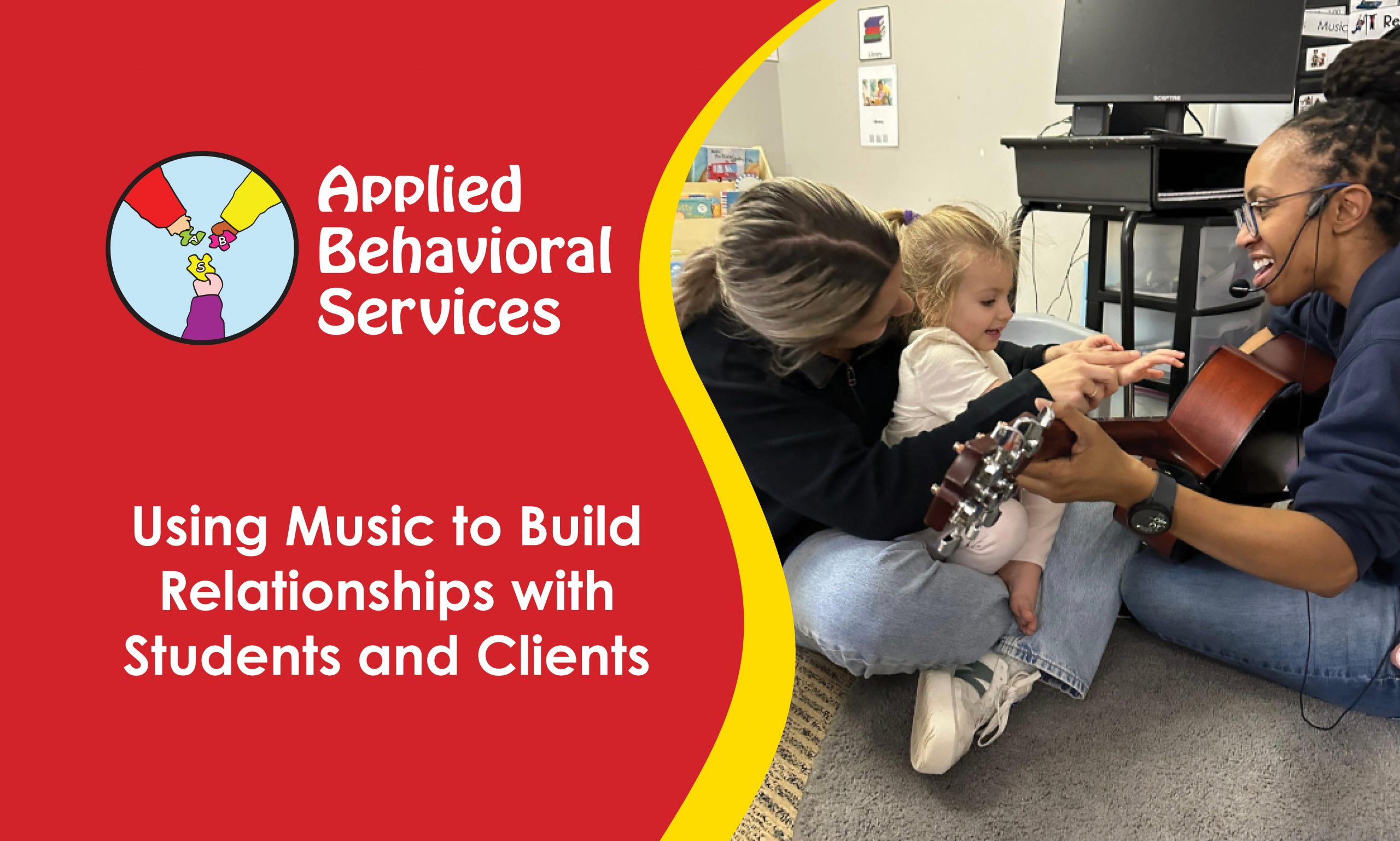
By Hannah Village, MT-BC & RBT, Music Therapist, ABS Dayton
As a music therapist working for New Story at Applied Behavioral Services in Dayton, Ohio, I support children with autism spectrum disorder (autism) who face behavioral, communicative, social, and emotional challenges. I use tailored sessions to suit the needs of each client by using music to help them achieve their goals. Such goals may range from joint attention, back-and-forth communication, and taking turns within the realm of behavior, to any factor within verbal behavior, and addressing needs for self-regulation when focusing on emotional challenges.
The types of intervention used in my music therapy sessions are based around my client’s preferences, tolerances, dislike or like of pitch, and instrumentation. Here are some tips for establishing your own connections through music:
- Use props! In addition to singing or playing guitar, try incorporating props such as colored silk scarves, animal puppets, percussion instruments, and books.
- Make adjustments as you go! Observe the client’s response to the music and adjust the volume, speed, or lyrics as needed.
- Explore music preferences! Use trial and error to discover the client’s instrument preferences, preferred genres, or favorite tunes.
- Discover the unique effect music has on each client! Calming music can support clients when they are escalated, or their behavior is out of control. Discover what works for them and incorporate it during the appropriate scenario!
Music therapy is not a performance but rather an interaction to help your client reach their goals. What scenarios can music therapy be beneficial in?
- Reinforcement
- Part of an intervention
- Support during an emotional dysregulation moment
Music is the answer to connection. Music can help build relationships between caregiver and child, technician and client, or teacher and student. Tune into the music your students love and watch your rapport with them grow!
